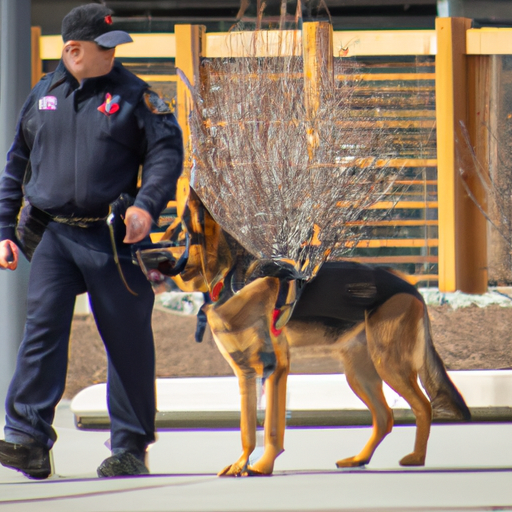Introduction
You might have seen them in action on TV, or maybe you’ve spotted one during a community event, but have you ever wondered what police dogs really do? These hard-working canines are more than just the “good boys” of the law enforcement world. They play crucial roles in ensuring public safety, solving crimes, and even saving lives.
The Various Roles of Police Dogs
There’s a lot more to a police dog’s job than just chasing after bad guys. Here’s an overview of the different roles these incredible animals can play:
- Search and Rescue: These dogs use their keen sense of smell to locate missing persons or track down suspects. They can even find victims buried under rubble after disasters.
- Explosives Detection: If there’s a bomb threat, it’s these dogs who are sent in to sniff out the danger.
- Drug Detection: These dogs are trained to detect the scent of various illicit substances, helping to keep drugs off our streets.
- Crowd Control: During public events or protests, police dogs can be used for crowd control, helping to maintain order.
- Patrol Duties: Some police dogs simply accompany their handlers on patrol, providing an extra set of eyes, ears, and, of course, a powerful nose.
The Training Involved
The second you think about the duties these dogs perform, you might wonder about the training they receive. Here’s a brief rundown:
- Obedience Training: This forms the foundation of a police dog’s education. They learn to follow commands without hesitation.
- Agility Training: Police dogs must be able to navigate various obstacles, like jumping through windows or climbing stairs.
- Endurance Training: Given the physical demands of their job, police dogs undergo rigorous endurance training.
- Specialized Training: Depending on their role, dogs receive specialized training in areas like explosives detection or search and rescue.
| Type of Training | Duration |
|---|---|
| Basic Obedience | 4-6 months |
| Specialized Training | 3-6 months |
| Agility and Endurance | Ongoing |
The Breeds Commonly Used
When you imagine a police dog, you might picture a German Shepherd, and you wouldn’t be wrong! Here are some of the most commonly used breeds:
- German Shepherds
- Belgian Malinois
- Bloodhounds
- Labrador Retrievers
- Dutch Shepherds
Each breed has its unique strengths, but they all share a common trait: a strong desire to work and serve alongside their human partners.
The Impact of Police Dogs
The impact these dogs have is immeasurable. They help find lost children, uncover hidden contraband, and even prevent terrorist attacks. But beyond these tangible accomplishments, they also bring comfort and companionship to their handlers and the communities they serve.
Frequently Asked Questions
Q: How long do police dogs work before they retire?
A: Most police dogs work until they are around 8-10 years old, but it can depend on their health and the nature of their work.
Q: Do police dogs live with their handlers?
A: Yes, most police dogs live with their handlers. This helps to strengthen their bond and ensures the dog is well cared for.
Q: Can any dog become a police dog?
A: While many breeds can be trained for police work, certain breeds like German Shepherds and Belgian Malinois are most commonly used due to their intelligence and physical capabilities.
Through this piece, let’s celebrate these remarkable dogs and the invaluable contributions they make to our society. So, the next time you see a police dog, give them the respect they deserve. They’re not just pets; they’re heroes.



